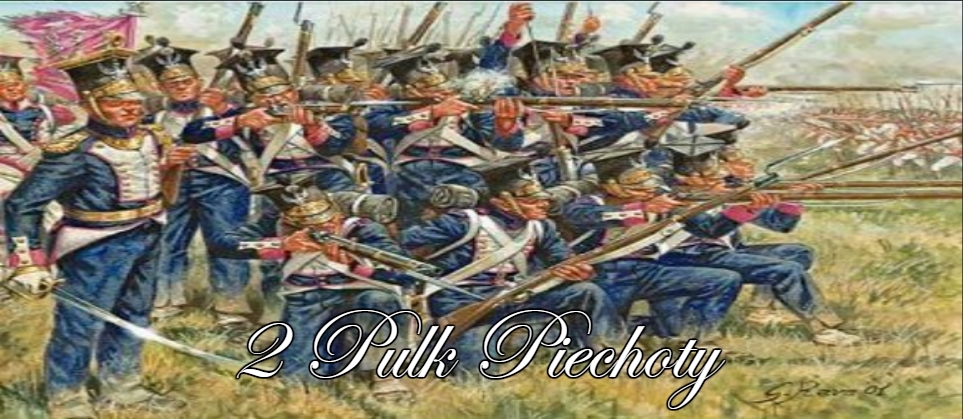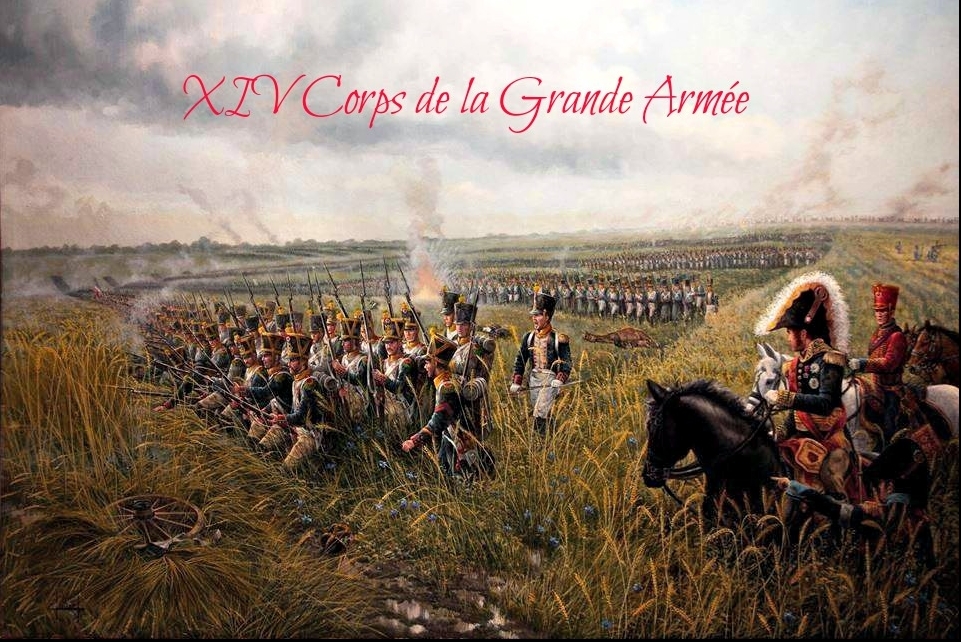1
Regiments / 2 Pulk Piechoty (NA)
« on: May 28, 2017, 05:36:01 am »
History In 1806, after crushing the fearsome Prussian army at Jena and Auerstadt, the French troops arrived in Poland. Marshal Murat entered Warsaw to a rapturous welcome. He was feted by the Poles igniting hopes of future kingship. The Polish populace considered Napoleon's troops as friends. This is confirmed by French officers Parquin writes: "After our passage of the [Vistula] river ... the enemy [Russians] gave way and we occupied the Polish villages, where we were received like brothers by the people, miserably poor though they were." The Emperor however was hesitant about reenacting the Kingdom of Poland. In spite of the ovations given him by the Poles, he wrote: "Only God can arbitrate this vast political problem ... It would mean blood, more blood, and srtill more blood ..." But it was not long before the Duchy of Warsaw became a bastion of France in central and Eastern Europe, and Polish troops stood ready to fight for Napoleon and independence. For nowhere else had Napoleon a more loyal and devoted ally than the Poles who stood by him through thick and thin in 1807 The Duchy of Warsaw was officially created by Napoleon as part of the Treaty of Tilsit signed with Russia and Prussia in 1807. It was formally an independent duchy, allied to France, and in a personal union with the Kingdom of Saxony. The progressive Napoleonic Code (ext. link) became the law of the duchy. The Poles joked that the army is Polish, the king is Saxon, the money is Prussian, and the code is French. The area of the duchy covered roughly the areas of the 2nd and 3rd Prussian partitions, with the exception of Danzig (Gdansk), which became the Free City of Danzig under joint French and Saxon "protection", and of the district around Bialystok, which became part of Russia. The population was 2,600,000. Following the annexation in 1809 of Austrian Galicia and Krakow, the duchy's population substantially increased, to 4,300,000. Already in November 1806 Napoleon directed General Dabrowski to form Polish troops. Dabrowski issued a decree ordering the population to provide 1 infantry recruit from every 10 households, 1 cavalry recruit from every 45 households and 1 chasseur (light infantry) recruit from every estate. In January 1807 the Polish army consisted of 20.500 recruits and 3.000 volunteers. The army was organized into three legions (divisions). The constitution established the Polish army at 30,000 men. Prince Poniatowski became its Minister of War. The Poles joked about the Duchy having "a Saxon king, French laws, Polish army, and Prussian currency." In 1802 the Regiment saw service in Switzerland and from 1802 to 1805 it was part of L'Armee de Hanovre. The Regiment took part in the campaigns in Austria, Prussia, and Poland and was sent to Spain and saw service at Talavera, Chiclana, Albuhera, Alba de Tormes, Vittoria and in Germany at Dresden in 1813. The rest of the regiment were seeing action at Nivelle, Orthez, and Toulouse. In 1815 it took part in the Waterloo campaign. As on the previous versions from 1812 and 1813, the silk lined tricolour was trimmed with gold. Ranks Commissioned Officers Pułkownik Podpułkownik Major Kapitan Porucznik Podporucznik Non Commissioned Officers Starszy sierżant Sierżant Szef Sierżant Sierżant Lance Enlisted Kapral Furier Starzy Kapral Grenadier Starszy Fizylier Fizylier Szeregowy Rekrut 
|



















